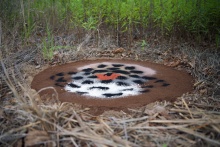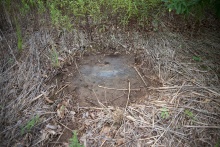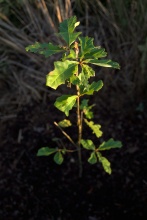
Artist: Shea Hembrey
About the Artist
Shea Hembrey's work questions reality. He seriously explores our best current understanding of the structure of reality while also often playing trickster. Recently, that exploration questions our contemporary view of the universe as revealed through physics. He approaches art by concentrating on a singular, defined conceptual project where the ideas direct what methods and media he uses. Research is key to all of his creative endeavors while he remains a prolific maker of things. Though always focused on developing new technical skills on his own, he has a varied formal art education.
His nine years of studying art at university include a year spent studying Māori art in New Zealand and an M.F.A. from Cornell University. Further explore his work online through coverage on NPR, PBS, in a New York Times Magazine profile, and a popular TED talk. He is the 2023-24 Grant Wood Fellow in Painting & Drawing at the University of Iowa.
About the Project
Two thirds of North American songbirds are currently at risk largely due to habitat loss. In this series, Hembrey improves plant growth using soil amendments to create patterns representative of specific bird plumage. This project is a new take on the tradition of landscape painting in that it tangibly alters the landscape rather than just depict imagery of the land. Physically, painting has traditionally been made from pigments pulled from the earth and in this instance, pigments are given back into the soil to improve the landscape. These powdered pigments absorb into the soil before the artist plants trees, bushes, and grasses vital to the corresponding bird species.
This spring art project by Shea Hembrey spans a 40-mile corridor in eastern Iowa from private family farms and urban backyards to the city parks of Cedar Rapids to the University of Iowa campus to the Indian Creek Nature Center (which has a pre-school which will be assisting).
Artistically, this project is a new take on the tradition of landscape painting in that it tangibly alters the landscape rather than just depicting imagery of the land. Physically, painting has traditionally been made from pigments pulled from the earth, but in this instance, pigments are placed back into the soil to improve the landscape.
The project revises how we interact with the land in two ways: first as a direct way of creating art with the earth, and second, as accessible and relevant activism. The idea grew from Hembrey’s search to create tangible environmental improvement. Often, we feel ineffectual and incapable—and even hopeless—when confronted with the magnitude of climate change. But Hembrey sees hope. This project is a call to action for all backyard birders to escalate their attentions to include habitat plantings. If you have a birdfeeder in your backyard, then you can become a frontline activist for this issue as its impacts are observable and personal.
But just as birds aren’t picky about human-defined territorial boundaries, this project is making broad use of the community and territory, with Hembrey creating projects across all types of properties. The process begins with identifying Iowa native birds that a specific location could attract. Hembrey tests the soil in that location to determine how the soil should be supplemented to best support specific plantings that support that particular bird.
The soil supplements become the pigments used in each design. For instance, if the soil needs to be less acidic, Hembrey adds lime, which is white. The design itself is based on the specific plumage of the birds. Hembrey levels a 30-inch diameter circle and then uses a sifter, rather than a paintbrush, to apply the pigments. After a few rains, the supplements are completely absorbed into the soil and then it’s time to plant.
Contact
Maura Pilcher, Director of the Grant Wood Art Colony, University of Iowa
Process
- Kick-Off Meeting: Site representatives meet with Hembrey to discuss location and appropriate native vegetation—trees, shrubs, grasses.
- Soil Testing: Hembrey tests the soil in the identified location to determine deficiencies for the intended vegetation.
- Plumage Plan: Hembrey reviews list of native songbirds and their habitats to identify a bird for the landscape painting. Hembrey generates a palette of colors based off the nutrients needed for the soil and creates a stylized plumage design.
- Installation: Hembrey coordinates with the site representatives to determine an appropriate time to install the landscape painting and to collaborate with volunteers. Hembrey installs the landscape painting utilizing a stencil and powdered nutrients (think lime, charcoal, etc.)
- Saturation: Over the following days and weeks, the landscape painting changes as animals leave tracks and rains dissolve the nutrients into the soil. The artist photographs the painting throughout these stages.
- Vegetation Planting: The artist plants the selected native plant. Minimal maintenance is expected beyond this point.
Species Selection
The site representatives may choose from the many native Iowan flora species that provide songbird habitat. Popular selections include: white oak, swamp white oak, bur oak, red bud, silky dogwood, ninebark, and red cedar.
Current Confirmed Sites/Partners
Indian Creek Nature Center, Brucemore, Grant Wood Elementary (Cedar Rapids), Cedar Rapids Public Art Commission—Bever, Ellis, and Manhattan Parks, University of Iowa, Swisher, Hills, and several private locations.


